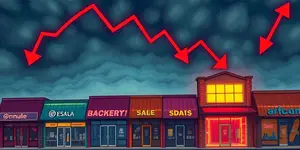
The year 2025 has witnessed a profound reshuffling of market leadership as sector rotation steers capital toward new opportunities. Investors who adapt to these shifts can enhance returns and mitigate risks by recognizing evolving trends across industries.
Below, we explore the drivers behind rotation, illustrate recent performance data, and offer practical strategies to navigate changing market dynamics.
Sector rotation describes the strategic movement of capital from one industry sector to another in response to economic cycles, market sentiment, and macroeconomic influences. As a core strategy for capturing returns, rotation allows investors to participate in leading sectors while avoiding potential downturns in lagging segments.
By monitoring shifts in leadership, investors can optimize portfolio positioning and reduce exposure during periods of heightened volatility.
Sector performance often correlates with stages of the business cycle. Understanding these patterns helps investors anticipate where growth and stability will emerge.
In addition to cycle-driven moves, momentum-based rotation capitalizes on technical trends. Investors look for sectors displaying sustained strength.
Key indicators include:
Combining momentum signals with fundamental insights can yield timely signals for rotation and help capture phases of accelerating gains.
The first half of 2025 has delivered notable leadership changes. After years of dominance by technology and the “Magnificent 7,” investors are reallocating to sectors that performed modestly in previous cycles.
Key year-to-date performance (as of June 2025):
Several macro factors have propelled the 2025 rotation:
These forces illustrate why managing risk as cycle matures is essential for preserving capital and capturing emerging opportunities.
Entering 2025, energy and utilities outperformed expectations as investors anticipated a moderation in global growth alongside persistent inflation.
AI-driven data center expansion spiked electricity demand, further underpinning utilities. At the same time, energy companies benefitted from higher commodity prices and renewed infrastructure investment. This rotation away from tech underscored how quickly AI-driven analysis tools identify shifts and enable agile repositioning.
Investors can harness sector rotation trends with disciplined approaches and modern tools.
Market strategists debate the durability of current leadership trends. Some view cyclical shifts as temporary realignments, while others predict that structural changes could sustain new leaders, driven by energy transitions and evolving global trade patterns.
Ultimately, integrating rotation analysis with broader investment themes—such as technological innovation and sustainability—can position portfolios for resilient growth in diverse market environments.
By understanding the mechanics of sector rotation and applying adaptive strategies, investors can navigate the complex landscape of 2025 and beyond with confidence.
Embrace these insights to transform market transitions into lasting opportunities.
References













